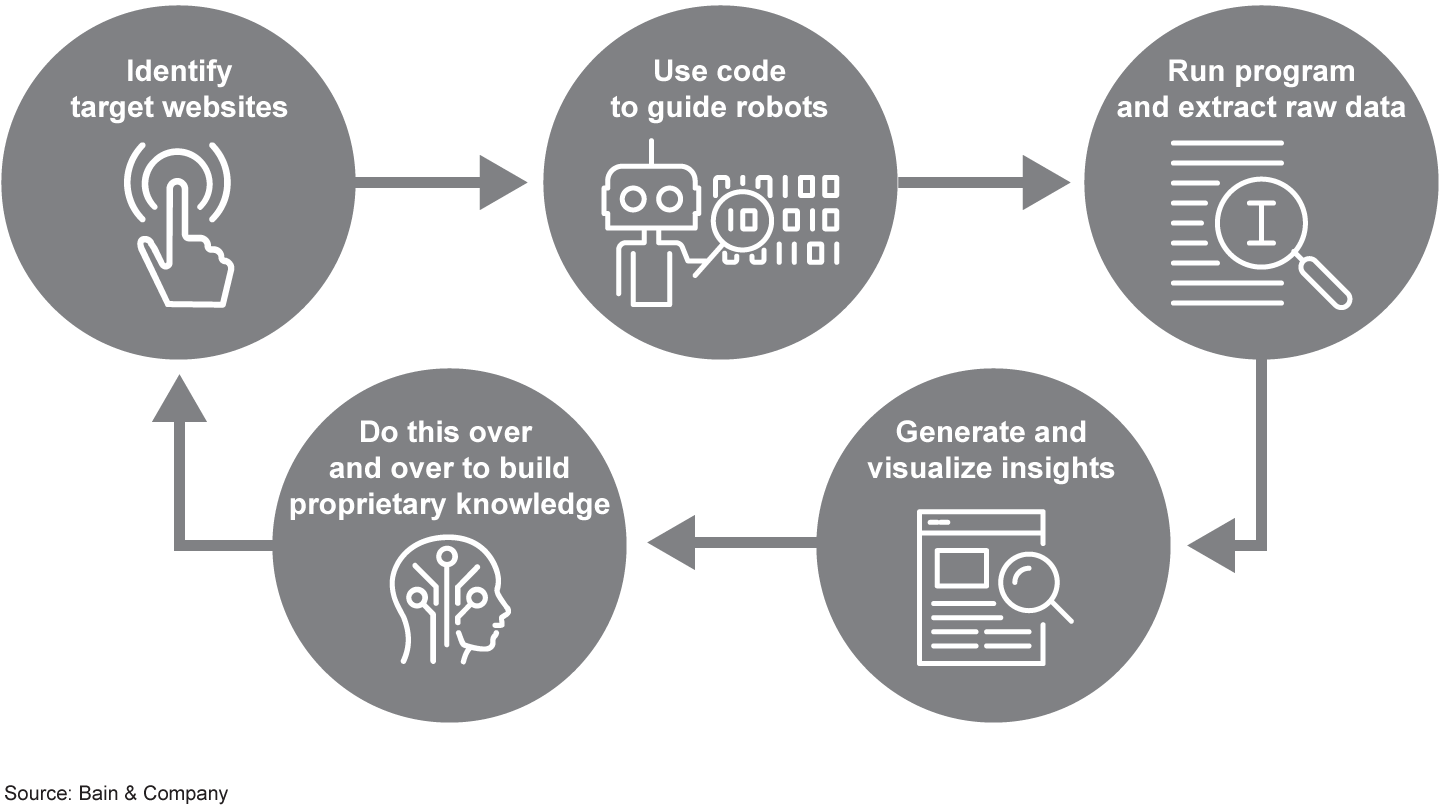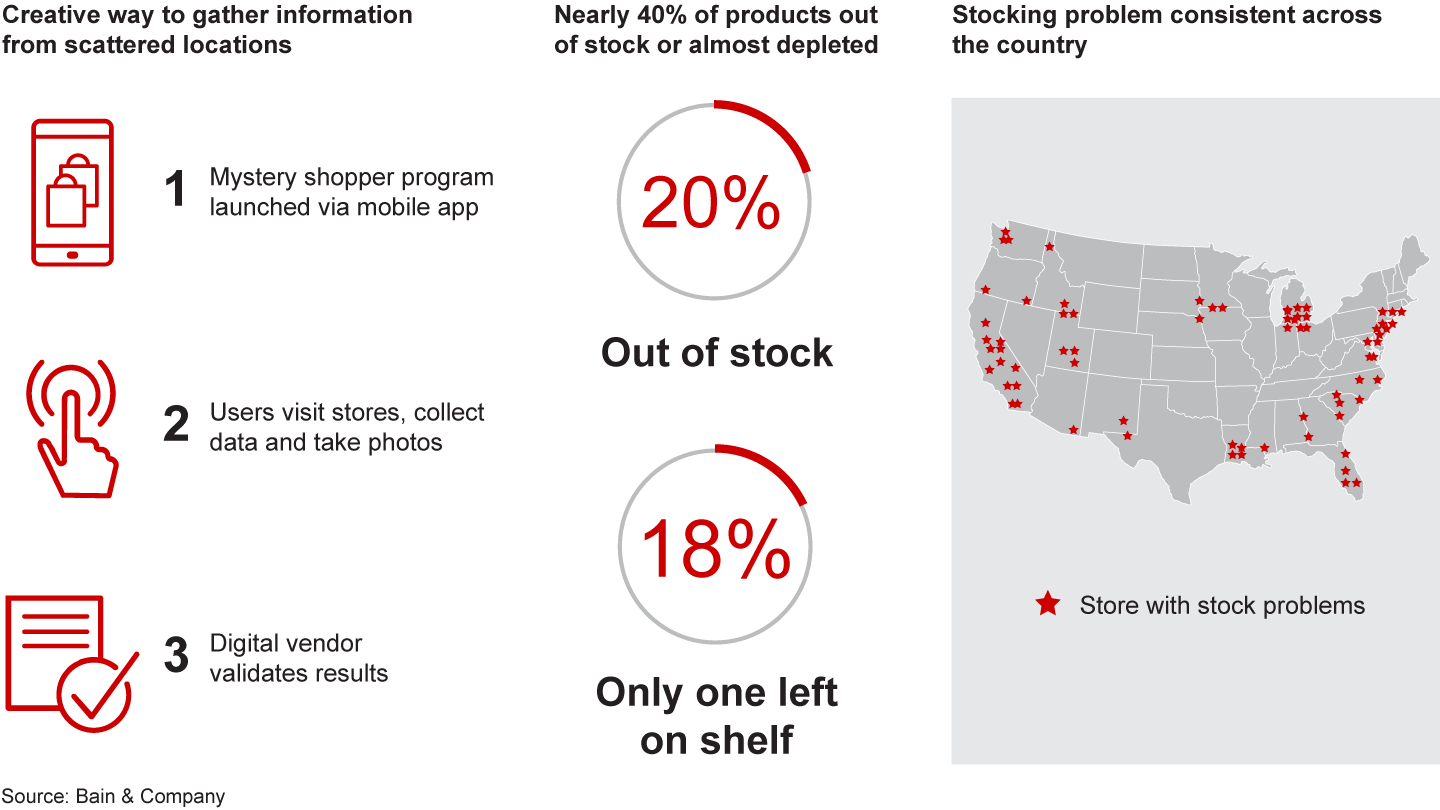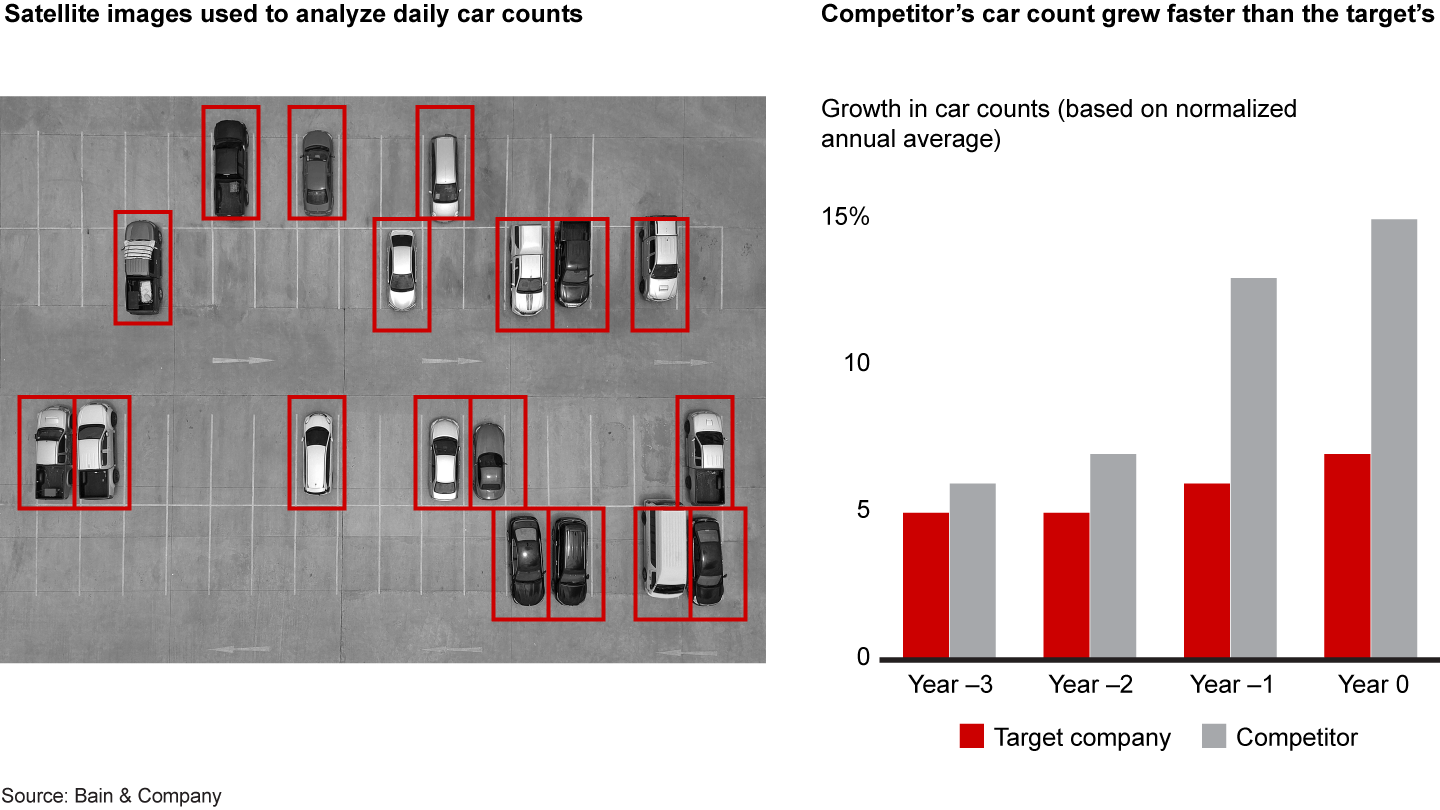Report
 }
}
This article is part of Bain’s 2019 Global Private Equity Report. This section looks at how GPs are discovering the power of advanced analytics to shed light on both value and risks in ways never before possible. Explore the contents of the report here or download the PDF to read the full report.
At a time when PE firms face soaring asset prices and heavy competition for deals, advanced analytics can help them derive the kinds of proprietary insights that give them an essential edge against rivals. These emerging technologies can offer fund managers rapid access to deep information about a target company and its competitive position, significantly improving the firm’s ability to assess opportunities and threats. That improves the firm’s confidence in bidding aggressively for companies it believes in—or walking away from a target with underlying issues.
What’s clear, however, is that advanced analytics isn’t for novices. Funds need help in taking advantage of these powerful new tools. The technology is evolving rapidly, and steady innovation creates a perplexing array of options. Using analytics to full advantage requires staying on top of emerging trends, building relationships with the right vendors, and knowing when it makes sense to unleash teams of data scientists, coders and statisticians on a given problem. Bain works with leading PE firms to sort through these issues, evaluate opportunities and build effective solutions. We see firms taking advantage of analytics in several key areas.
Scraping the web 2.0
Many PE funds already use scraping tools to extract and analyze data from the web. Often, the goal is to evaluate customer sentiment or to obtain competitive data on product pricing or assortment. New tools make it possible to scrape the web much more efficiently, while gaining significantly deeper insights. Deployed properly, they can also give GPs the option to build proprietary databases over time by gathering information daily, weekly or at other intervals.
Using a programming language such as Python, data scientists can direct web robots to search for and extract specific data much more quickly than in the past (see Figure 2.17). When one global PE fund was evaluating a delivery service company, for instance, it needed to create a list of all the stores the service worked with to estimate its market penetration. Traditional web scraping would have required several days. But the new technology produced a complete list of stores in a few hours. The same quick results helped another PE fund evaluate a wellness chain. Overnight, data scientists compiled reviews and scores available on the web for the company and all of its competitors. That data allowed the firm to understand the target’s market penetration by location and compare customer scores, including negative and positive comments. With the right code and the right set of target websites, new tools can also allow firms to assemble proprietary databases of historical information on pricing, assortment, geographic footprint, employee count or organizational structure. Analytics tools can access and extract visible and hidden data (metadata) as frequently as fund managers find useful.

Taking a digital X-ray
Most target companies these days sell through online channels and rely heavily on digital marketing. Fewer do it well. The challenge for GPs during due diligence is to understand quickly if a target company could use digital technology more effectively to create new growth opportunities. Post-acquisition, firms often need similar insights to help a portfolio company extract more value from its digital marketing strategy.
Assessing a company’s digital positioning—call it a digital X-ray—is a fast and effective way to gain these insights. For well-trained teams, it requires a few hours to build the assessment, and it can be done from the outside in—before a fund even bids. It is also relatively easy to ask for access to a target company’s Google AdWords and Google Analytics platforms. That can produce a raft of digital metrics and further information on the target’s market position.
Data scientists working for an international PE firm used digital X-ray tools to glean important insights when the firm evaluated a leading online real estate business based in the US. The deal thesis focused on the opportunity to increase revenues significantly by improving traffic to the target’s website. In less than a day, the team tapped multiple data sources to measure the target’s performance using key digital metrics, including awareness, conversion, brand performance and social media effectiveness (see Figure 2.18).

The firm found that the target already ranked as a leader digitally, offering little opportunity to increase web traffic. Although the company had the potential to improve its margin on paid search, there was limited upside there, too; the sector was highly competitive, so absolute margins would still be low. User testing identified something even more troublesome: Customers who visited the target’s website questioned the basic value proposition. The combined insights from the digital X-ray helped convince the PE firm not to make a bid.

Get Our Latest Private Equity Insights
Receive Bain’s landmark Global Private Equity Report each February, plus the latest insights and developments in private equity throughout the year.
Using the power of the masses
One challenge for PE funds historically has been accessing data from large networks or from scattered and remote locations. But new tools let deal teams complete such efforts in a fraction of the time and cost. Take the case of a US portfolio company that believed one of the retail chains carrying its products was not stocking them appropriately, leading many stores to run out of stock. With more than 700 store locations nationwide, it would have been time consuming and expensive to send a mystery shopper to visit each store and collect data.
Instead, the company’s management turned to a digital vendor that mobilized a large group of consumers to do the spy work. After registering through a mobile application, the consumers earned small incentives for visiting the retailer’s stores, spending 15 to 20 minutes collecting information and taking photos, and then supplying key data points via the app. In essence, the digital vendor’s program launched an invisible army of mystery shoppers to all of the stores simultaneously. The flood of data confirmed that about 40% of the brand’s products were either out of stock or the store had only one unit left on the shelf (see Figure 2.19). Armed with real data, the portfolio company’s management convinced its retail partner to take immediate action.

Understanding traffic data
One issue that PE deal teams often ponder in evaluating companies is traffic patterns around retail networks, manufacturing facilities and transport hubs. Is traffic rising or declining? What’s the potential to increase it? In some industries, it’s difficult to track such data, especially for competitors. But high-definition satellite images or drones can glean insights from traffic flows over time. Take the case of a global PE investor in the midst of due diligence on a retail target. The target company’s financial performance had improved significantly over the previous five years, but it still lagged its major competitor in revenue per store—and the gap was growing. While differences in customer and channel mix could explain part of the gap, the deal team suspected lower traffic and poor store execution were the main factors.
The fund enlisted a data science team to tap satellite observations and estimate the number of cars parked at the target’s stores vs. the competitor’s stores over the previous four years (see Figure 2.20). Using a geoanalytics platform, the team obtained a series of high-definition satellite images of the two parking lots and analyzed changes in normalized daily car counts. The data demonstrated that the competitor’s average car counts had been increasing steadily over the past three years, while the target company’s stores showed limited traffic growth. The findings also pinpointed when the traffic counts started to diverge, allowing the deal team to check whether the competitor’s increasing traffic was linked to marketing campaigns or supply-chain improvement initiatives. Through these insights, the fund could fully diagnose the main reasons for the target’s lagging performance and zoom in on locations where the gaps were biggest. The traffic data also gave the deal team a head start designing growth initiatives for the target during due diligence.

Identifying disruption
Another advantage of analytics tools is the ability to see around corners, helping fund managers anticipate how disruptive new technologies or business models may change the market. Early signs of disruption are notoriously hard to quantify. Traditional measures such as client satisfaction or profitability won’t ring the warning bells soon enough. Even those who know the industry best often fail to anticipate technological disruptions. With access to huge volumes of data, however, it’s easier to track possible warning signs, such as the level of innovation or venture capital investment in a sector. That’s paved the way for advanced analytics tools that allow PE funds to spot early signals of industry disruption, understand the level of risk and devise effective responses. These insights can be invaluable, enabling firms to account for disruption as they formulate bidding strategies and value-creation plans.
These are just a few of the ways that PE firms can apply advanced analytics to improve deal analysis and portfolio company performance. We believe that the burst of innovation in this area will have profound implications for how PE funds go about due diligence and manage their portfolio companies. But most funds will need to tap external expertise to stay on top of what’s possible. A team-based approach that assembles the right expertise for a given problem helps ensure that advanced analytics tools deliver on their promise.
This article is part of Bain’s 2019 Global Private Equity Report. Explore the contents of the report here or download the PDF to read the full report.



